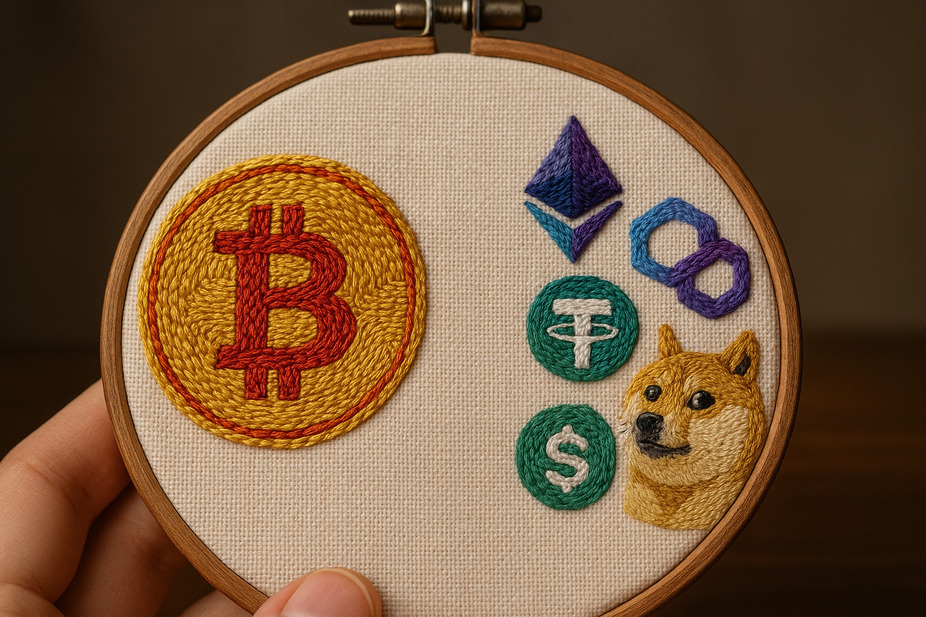Popular cryptos
Dai
Download Ironwallet app and get tool for making transaction without network fee
About Dai
Dai is a collateral-backed stablecoin whose value hovers around $1. It maintains its price stability through an autonomous system of smart contracts on the Ethereum blockchain, rather than a centralized authority. The core mechanism that keeps Dai’s value stable is collateralized debt positions (CDPs).
Users lock up ether cryptocurrency as collateral to generate Dai through these CDPs. The system requires overcollateralization, meaning the value of the collateral must be higher than the value of Dai debt generated. This buffer protects the system in case the price of Ether drops. The Dai platform also applies stability fees to these loans to discourage excessive debt positions.
If the price fluctuates beyond a certain threshold, the CDP enters liquidation. The system sells the collateral to buy back and burn outstanding Dai. This adjusts supply to manage deviations from the $1 peg.
History of Dai
Dai originated from the MakerDAO project and its stablecoin MKR in 2017. Maker sought to create a decentralized stablecoin that would maintain its peg to the US dollar without any centralized custodianship like Tether.
Their solution was a collateral-backed model and autonomous feedback mechanisms built on Ethereum. Users could lock collateral in a smart contract to generate Dai tokens against their collateralized debt position. Additional supply and demand dynamics would maintain the soft peg.
Dai launched in late 2017 and largely held its $1 peg through 2018. However, severe collateralization losses following Ethereum’s price crash in Q1 2019 challenged that stability. The project rebounded through governance measures to liquidate undercollateralized CDPs and recapitalize the system.
Maker incorporated further changes like introducing multi-collateral Dai, pegging it to the US Dollar index rather than the dollar, and decentralizing governance through the MKR token. This second phase launched in November 2019, marking the current incarnation of Dai.
Dai has since established itself as a leading stablecoin in decentralized finance. Its decentralization and transparency make it well-suited for insurance, lending and other applications benefiting from censorship resistance.
The Ethereum-Based Foundation for DeFi Applications
The decentralized platform and transparency of Dai transactions provide a reliable foundation for decentralized finance applications without custodial risks inherent to fiat-backed stablecoins.
Dai enables several use cases for payments, lending, investing and more. Its integration on exchanges like Coinbase and Binance makes conversions to fiat seamless. Dai also facilitates global transactions faster, cheaper and on weekends unlike banks.
Minting and Burning Dai
Dai is created through collateralized debt positions (CDPs) on the Maker platform. Users open CDPs by locking up ether as collateral and generate Dai as debt against that collateral. This “minting” process expands Dai supply to match market demand.
The collateralization ratio, currently 150%, means $150 worth of ether is required to mint $100 worth of Dai. This overcollateralization provides a cushion in case ether prices decline. If the ratio drops below the liquidation ratio of 100%, the CDP enters liquidation.
Liquidation essentially burns outstanding Dai debt. The system auctions off the collateral to buy back and remove the Dai debt from circulation at a small discount. This burning process contracts Dai supply proportionate to the amount that was liquidated.
Additionally, users can directly burn their own Dai without collateral requirements. They send their Dai to a dedicated burn address where the tokens are provably destroyed forever. This also reduces Dai supply and provides a lever to organically move its price back up to the $1 in case of deviations.
These paired mechanisms of minting and burning maintain adequate Dai liquidity and its soft peg to the US dollar.
Dai Lending Markets
But Dai’s most common use case is in decentralized money markets on platforms like Aave and Compound. Users can lend, borrow and earn interest on holdings in a peer to peer fashion, without a bank intermediary.
Stablecoin savings accounts like these offer interest rates magnitudes higher than traditional banks. The rates come from lenders in these markets seeking to maximize returns by putting their stablecoins to productive use. Borrowers pay interest for the benefit of leveraging these stables coins to long or short cryptocurrencies.
Such open lending markets represent a decentralized alternative to legacy prime brokerage and rehypothecation systems common in traditional finance. The composability of these open protocols ushers in an era of “smart money legos” to build previously unimaginable financial products.
Iterating on Algorithmic Stablecoins
Dai has its tradeoffs though relative to fiat-backed stablecoins like USDC or USDT. Over-collateralization locks up precious ether capital that could be put to alternative use. And the platform requires active governance and vigilant liquidators to keep the ecosystem well-tuned.
These limitations have led researchers towards developing algorithmic stablecoins without collateral requirements. But previous attempts like Basis Cash have failed due to inability to maintain the peg in volatile periods.
Future algorithmic designs can learn from Dai’s success – retaining decentralized governance, transparency and capital efficiency without dilution risks. Such innovation will bolster DeFi usability and fuel enterprise adoption by improving the fiat on-ramp process. When integrated in Layer 2 solutions, decentralized stablecoins may even achieve the scalability required for dominant global adoption.

























